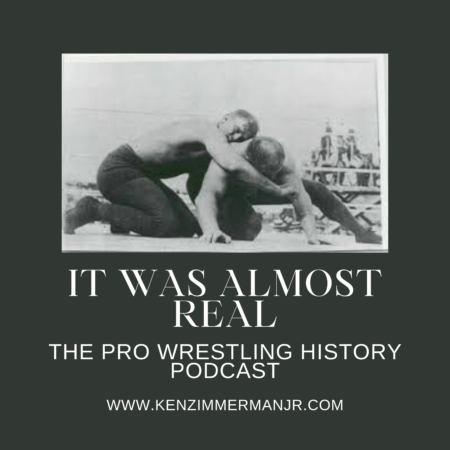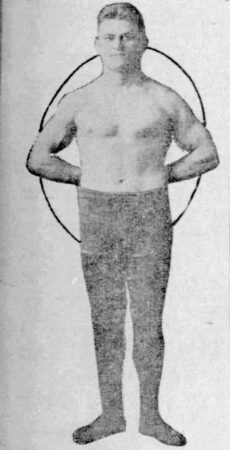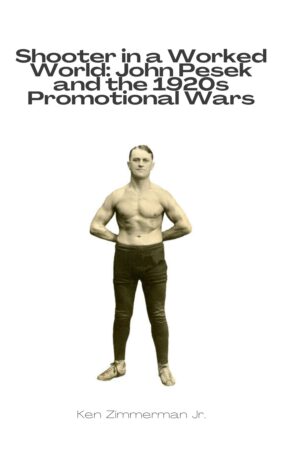Folge 50 – Wrestling und Erster Weltkrieg
Podcast: Spielen im neuen Fenster | Herunterladen
In dieser Folge, Wir diskutieren, wie sich der Erste Weltkrieg auf das amerikanische Profi-Wrestling auswirkte. Wir verraten auch, wer das gesagt hat, “Wiederholung ist der Schlüssel beim Umgang mit Patzern.”
Aktualisierung
I am writing two books at once for the first time. Das erste Buch ist mein letztes geplantes St. Louis Geschichtsbuch über St. Louis Chief of Detectives William Desmond. The second book is a research project on John “Der Nebraska-Tigermann” Sand, who settled several promotional wars by wrestling legitimate contests in the 1920s.

Podcast Art for the It Was Almost Real: Der Pro Wrestling History Podcast
Main Content
Zwischen 1918 und 1919, the wrestling trust led by Jack Curley put John “Der Nebraska-Tigermann” Pesek in the same boat as Marin Plestina. Curley would not book Pesek against the “Große Vier” – World Champion Earl Caddock, former World Champion Joe Stecher, Und “Würger” Lewis, und Wladek Zbyszko. These four wrestlers contested for the World Title between 1915 und 1920.

John Pesek at 21 years of age in 1915 (Public Domain)
Curley was reluctant to book the wrestlers against Pesek because Pesek proved to be an effective shooter and hooker. Clarence Ecklund, a well-respected middleweight wrestler, trained Pesek in the carnival style of catch-as-catch-can wrestling. This style of wrestling focused on “Haken” which are chokes and joint locks.
Since Pesek did not like to work with opponents, Curley worried that Pesek would shoot on on one of the “Große Vier” and try to defeat them legitimately. Pesek lack of interest in working with the big names kept him out of a deserved title shot.
In 1918, circumstances intervened to convince Curley to book a contest between Wladek Zbyszko and John Pesek in Omaha, Nebraska. World War I helped Pesek force Curley’s hand.
When America entered World War I in 1917, the government drafted professional wrestlers into the U.S. military. Caddock joined the Army and served in France during 1918 und 1919.
The government drafted Joe Stecher into the Navy. The government also drafted Pesek and his manager, Martin Slattery, into the Army. Jedoch, the military stationed Stecher and Pesek stateside allowing them to wrestle the occasional match.
Even with Stecher and Pesek taking matches occasionally, promoters struggled to find wrestlers to fill out their card. Wladek Zbyszko, who was a Polish immigrant, was not drafted but Curley could not find many name opponents for him. Desperate for cash, Curley agreed to bring Zbyszko to Omaha to wrestle Pesek.
The gamble paid off financially as 5,000 fans attending the Stockmen’s Association Annual Meeting in Gibbon, Nebraska attended the match. The heat of the outdoor match sapped Zbyszko worse than Pesek, who won the only fall after two hours of hard wrestling.
While Pesek’s defeat of Zbyszko did not automatically result in Curley booking Pesek more, the impression Pesek met on Curley led to Curley choosing Pesek to represent Curley against Marin Plestina in the 1921 promotional war. The trip to Omaha proved profitable in more ways than one for Jack Curley.
Rezension
We take a look at the 1933 match in Athens, Greece between Jim Londos and Kola Kwariani. The match drew a crowd of 70,000 to 100,000 spectators.
You can leave a comment or ask a question about this or any post on my Facebook page.
Pin It

